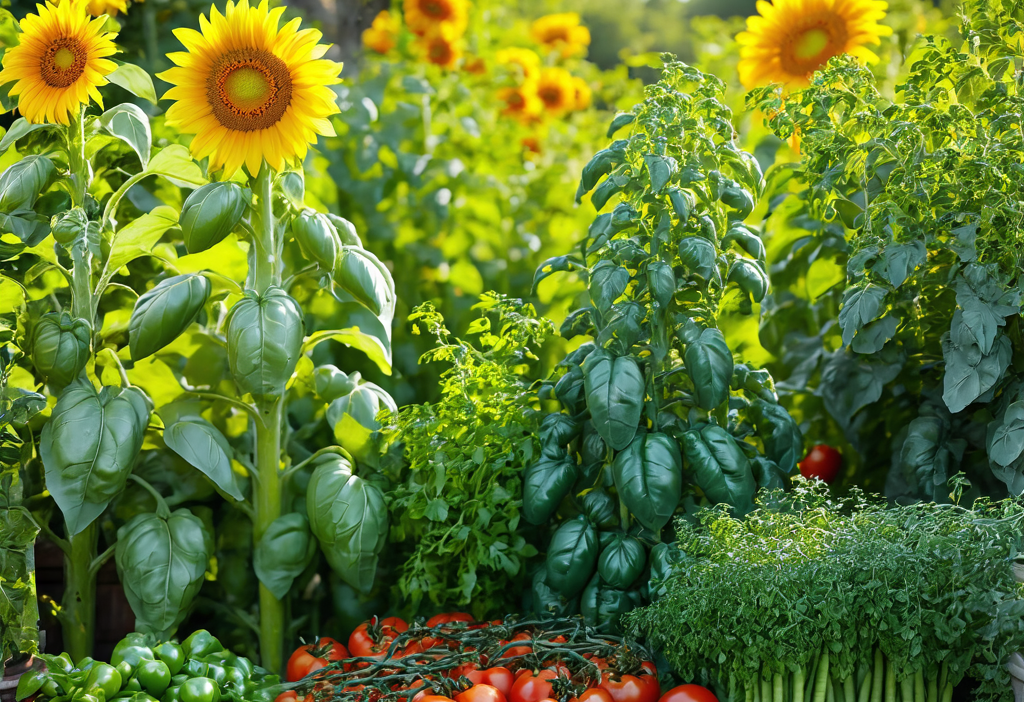The Art of Companion Planting: A Guide to Growing Better Together
Gardening is more than just planting seeds and waiting for growth—it’s about creating a harmonious ecosystem where plants support each other. This is where companion planting comes into play, offering benefits that go beyond mere aesthetics. Whether you’re a seasoned gardener or just starting out, understanding how to pair plants can transform your garden into a thriving, productive space.
What is Companion Planting?
Companion planting is the practice of growing different crops near each other for mutual benefits. This method has been used for centuries, and modern science continues to validate its effectiveness. By grouping plants strategically, gardeners can enhance growth, deter pests naturally, improve soil quality, and maximize space.
Why Should You Try Companion Planting?
There are numerous reasons to embrace companion planting in your garden:
- Pest Control: Some plants emit scents that repel pests, while others attract beneficial insects like ladybugs and bees.
- Soil Enrichment: Legumes like beans and peas fix nitrogen in the soil, making it available for other plants to use.
- Space Maximization: Companion planting allows you to make the most of your garden space by pairing tall and short plants together.
- Better Pollination: Flowers like marigolds and calendula attract pollinators, improving fruit set in vegetables.
Expert Plant Pairings for Your Garden
Here are some tried-and-true companion planting combinations to try:
Sunflowers + Tomatoes
Sunflowers act as natural trellises for tomato plants, providing shade and support. Their deep roots also help break up soil, improving drainage and aeration.
Marigolds + Green Beans
Marigolds are known for their ability to deter nematodes and other pests that can damage bean crops. Plus, their bright flowers add beauty to your garden.
Basil + Peppers
Basil not only enhances the flavor of peppers but also repels flies and mosquitoes. It’s a perfect addition to any herb or vegetable garden.
Tips for Successful Companion Planting
To make the most of companion planting, keep these tips in mind:
- Plan Ahead: Research which plants work well together before you start planting. Consider factors like sunlight needs and growth habits.
- Start Small: If you’re new to companion planting, begin with a few simple combinations and gradually expand your efforts.
- Observe Your Garden: Pay attention to how your plants are interacting. Some pairings may work better than others depending on your specific conditions.
Common Mistakes to Avoid
While companion planting is a rewarding practice, it’s important to avoid these common pitfalls:
- Overcrowding: Just because plants are companions doesn’t mean they should be planted on top of each other. Give them enough space to grow.
- Ignoring Soil Needs: Companion planting shouldn’t override the importance of good soil preparation. Ensure your soil is rich and well-draining.
- Relying Solely on Companion Planting: While effective, companion planting should be part of a broader pest management strategy that includes crop rotation and organic treatments.
Conclusion: Grow Smarter, Not Harder
Companion planting is a simple yet powerful way to enhance your gardening experience. By working with nature rather than against it, you can create a garden that’s not only productive but also beautiful and sustainable. So why wait? Start experimenting with these plant pairings today and see the difference in your garden!
Remember, every garden is unique, so don’t be afraid to try different combinations and find what works best for you. Happy planting!





